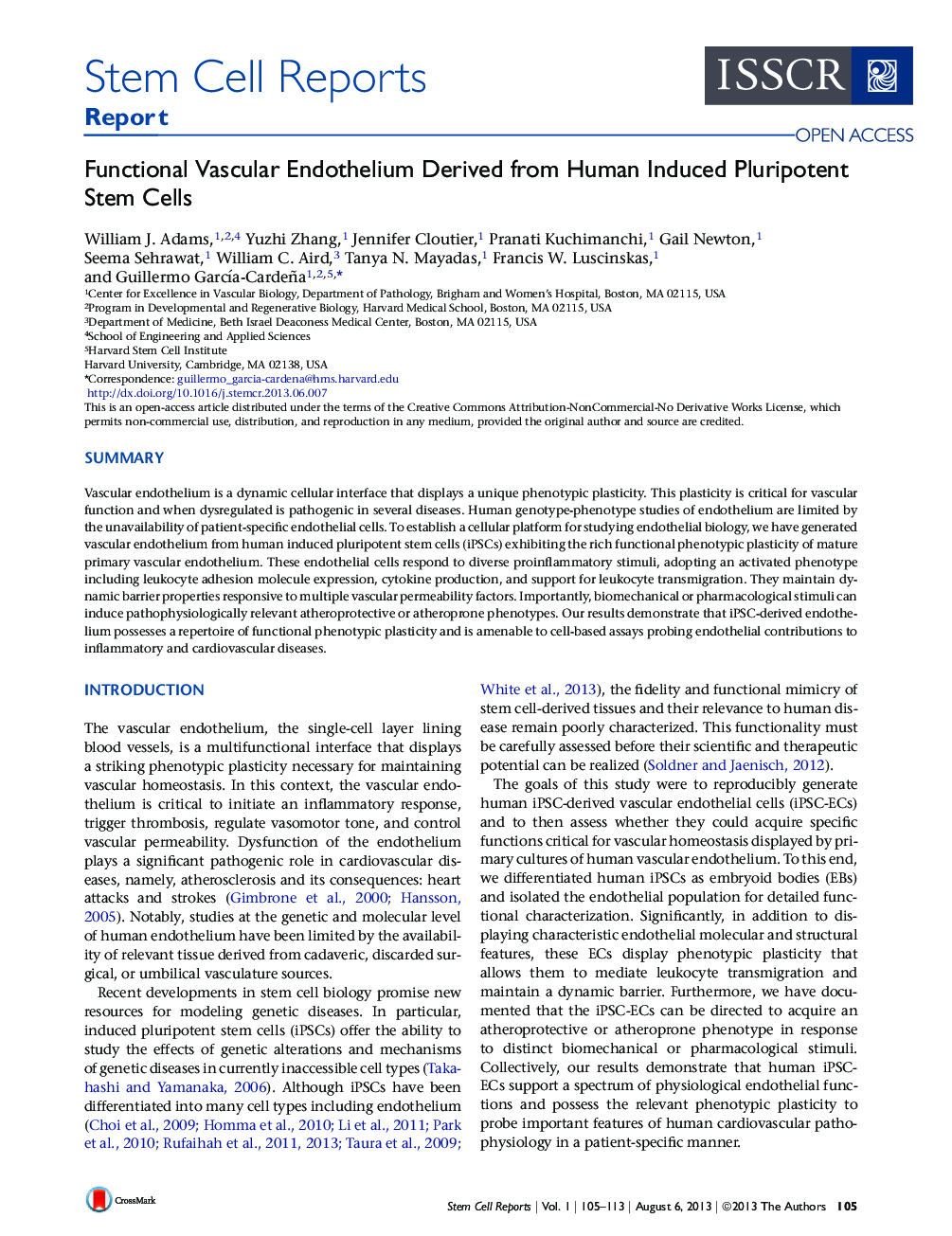| Article ID | Journal | Published Year | Pages | File Type |
|---|---|---|---|---|
| 2093524 | Stem Cell Reports | 2013 | 9 Pages |
•Human iPSCs generate vascular ECs with a rich functional repertoire•iPSC-ECs can undergo endothelial activation and maintain dynamic permeability•Biomechanical forces direct iPSC-ECs to atheroprotective or atheroprone phenotypes•iPSC-ECs are directed to an atheroprotective phenotype via pharmacological stimulus
SummaryVascular endothelium is a dynamic cellular interface that displays a unique phenotypic plasticity. This plasticity is critical for vascular function and when dysregulated is pathogenic in several diseases. Human genotype-phenotype studies of endothelium are limited by the unavailability of patient-specific endothelial cells. To establish a cellular platform for studying endothelial biology, we have generated vascular endothelium from human induced pluripotent stem cells (iPSCs) exhibiting the rich functional phenotypic plasticity of mature primary vascular endothelium. These endothelial cells respond to diverse proinflammatory stimuli, adopting an activated phenotype including leukocyte adhesion molecule expression, cytokine production, and support for leukocyte transmigration. They maintain dynamic barrier properties responsive to multiple vascular permeability factors. Importantly, biomechanical or pharmacological stimuli can induce pathophysiologically relevant atheroprotective or atheroprone phenotypes. Our results demonstrate that iPSC-derived endothelium possesses a repertoire of functional phenotypic plasticity and is amenable to cell-based assays probing endothelial contributions to inflammatory and cardiovascular diseases.
Graphical AbstractFigure optionsDownload full-size imageDownload as PowerPoint slide
